 by "ttyymmnn" (ttyymmnn)
by "ttyymmnn" (ttyymmnn)
Published 05/16/2017 at 12:35
 by "ttyymmnn" (ttyymmnn)
by "ttyymmnn" (ttyymmnn)
Published 05/16/2017 at 12:35
Tags: Planelopnik
; planelopnik history
STARS: 9
Welcome to This Date in Aviation History , getting you caught up on milestones, important historical events and people in aviation from May 13 through May 16.
!!! UNKNOWN CONTENT TYPE !!!
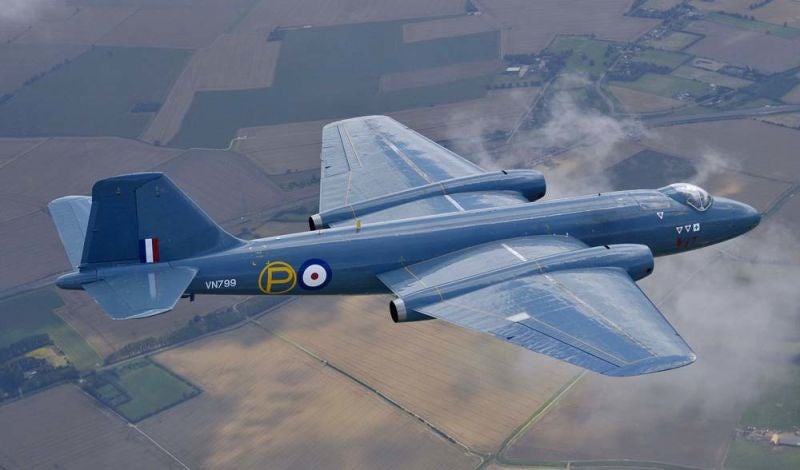
May 13, 1949 – The first flight of the English Electric Canberra. The history of aviation is marked by incredibly rapid technological development. Aircraft that are cutting edge technology when they took their first flight are regularly eclipsed by newer designs in only a few years, and some are even obsolete the first time they turn a wheel. But a handful of aircraft have proven to be so rugged, so reliable, and so adaptable to changing mission requirements that they reached and surpassed the remarkable milestone of 50 years of active service, and one of the aircraft on the list of diehards is the English Electric Canberra. The Canberra arose from a British Air Ministry requirement for a bomber to replace the de Havilland Mosquito , a piston-powered, multi-role fighter bomber that served with distinction during WWII. Though several well established manufacturers made proposals, English Electric was named a finalist, even though they had a very sparse history of aircraft manufacture. Up to that point, their entire aircraft construction experience was producing the Handley Page Hampden and Halifax bombers under license during the war. But English Electric took cues from de Havilland and adopted the design ethos of the Mosquito—put the most powerful engines available into the lightest, most aerodynamic airframe you can design and provide the greatest possible space for weaponry. They produced an aerodynamically clean airframe with no fuselage protrusions, and powered the bomber with two Rolls-Royce Avon turbojet engines mounted inside the large wings. Though designers considered swept wings, they chose instead to use wings that tapered outboard of the engine nacelles, since its mission requirements did not call for great speed, and maneuverability was considered of greater importance. In some regards, the Canberra actually resembled a scaled up Gloster Meteor . The Air Ministry ordered four prototypes, and, by the time the first prototype made its maiden flight, orders had already been placed for 132 aircraft. Despite their lack of experience, English Electric produced an aircraft that was so easy to fly that new pilots required only twenty of hours of jet training on the Meteor followed by a mere three hours of training in the dual-control Canberra trainer. The Canberra entered service with the Royal Air Force in 1951 and quickly became a very effective platform. With a top speed of 580 mph, it was capable of outrunning contemporary jet fighters until the introduction of the Hawker Hunter , and up to 8,000 pounds of bombs could be carried internally. Though the Canberra had been envisioned as a tactical nuclear bomber, early nuclear bombs were too large for it to carry, and early variants of the bomber suffered from relatively short range. Therefore, initial missions included tactical conventional bombing and reconnaissance. By 1957, changes in nuclear bomb design finally allowed the Canberra to take on the tactical nuclear attack mission, and bombers were soon stationed in Germany, Cyprus and Singapore to serve as a nuclear deterrent to the Soviet Union during the Cold War.
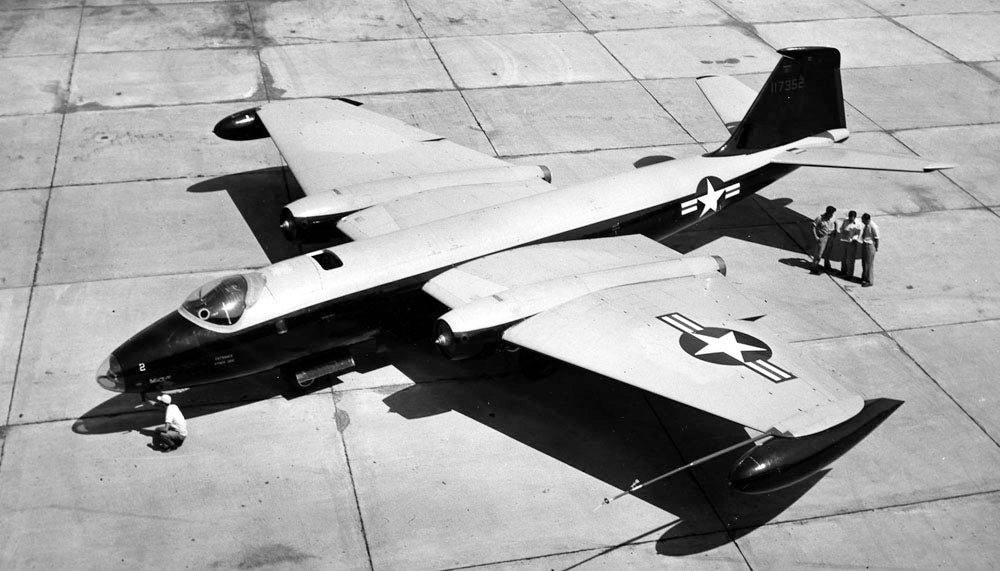
The Canberra also became a popular export aircraft, and when the US Air Force found themselves in dire need of a tactical bomber in Korea, they took the rare move of adopting the British-designed Canberra as the B-57 , with the Glenn L. Martin Company building and modifying just over 400 bombers, and the B-57 earned the distinction of being the first American jet bomber to drop bombs in combat. As a testament to the Canberra’s adaptability, no less than 27 variants were produced, plus 7 variants developed by Martin. The Canberra has also proven to be an excellent research aircraft, and though the USAF retired their B-57s by 1983, NASA still operates 3 WB-57Fs for high-altitude research, earth science and mapping missions. The Royal Air Force retired their last Canberras in 2006 after a remarkable service life of 59 years. (Photo via British Ministry of Defense ; US Air Force photo)
!!! UNKNOWN CONTENT TYPE !!!
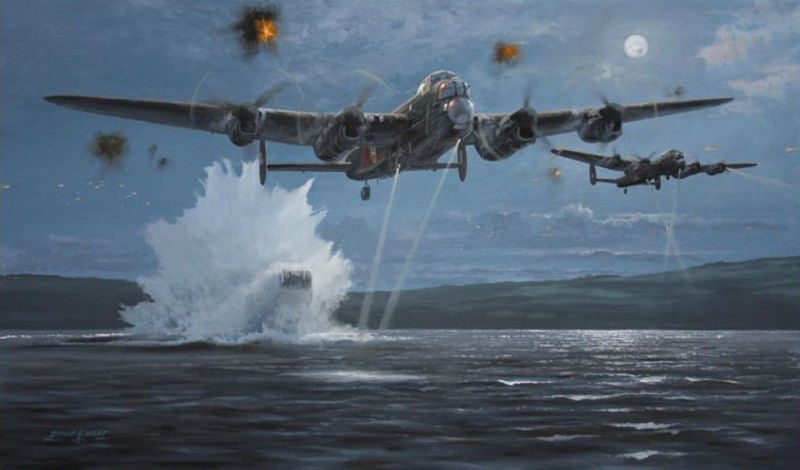
May 16-17, 1943 – RAF bombers carry out Operation Chastise . The River Ruhr traces a meandering course through western Germany from the mountainous Sauerland region down to the River Rhine . For centuries, the Ruhr had been the center of farming and industry, and during the early to mid twentieth century, the valley of the Ruhr was the primary location for much of Germany’s manufacturing, as the waters of the river provided both pure water for the manufacture of steel and hydroelectric power via the Möhne and Sorpe Dams. The River Eder also flowed through this strategic region, and the Edersee Dam also played a vital role in German manufacturing and farm irrigation. Even before the outbreak of WWII, the British Air Ministry identified these dams, and others like them, as possible strategic targets that could be destroyed should war break out with Germany, as they predicted it might. Breaching the dams would not only drain supplies of water for manufacturing and cut hydroelectric power, but it was hoped that catastrophic flooding would damage factories, destroy rail lines, and hinder transport on inland waterways. But once the decision to destroy the dams was taken, the RAF was faced with a singular problem: How to do it? A torpedo wouldn’t work, since the dams were protected by multiple torpedo nets. The RAF felt they could eventually reduce the dams through traditional bombing, but it would take tons and tons of bombs, or perhaps one huge bomb, but there was no aircraft capable of carrying it, nor was the level of accuracy required available at the time. The British needed an entirely novel approach, so the RAF turned to Barnes Wallis . Wallis was the Assistant Chief Designer at Vickers , and for some time he had been working on a bouncing bomb concept that he proposed for use against shipping. It soon became clear that such a weapon could also be used against dams. In order to breach the dam, the canister-shaped bomb would have to be dropped from a precise level above the water, at a precise distance from the dam, while rotating backwards at 500 rpm. Then it would skip across the water, over the torpedo nets, and settle to the base of the dam, where it would detonate using a hydroelectric fuse. While the bomb itself was fairly complex, the targeting system was anything but. To determine the correct distance from the dam for dropping the bomb, a simple sight with two prongs was used. As the bomber approached the dam, the prongs lined up with towers on the damn to indicate the correct distance. For altitude, a spotlight was fitted to the front of the bomber, and another aft, pointing downwards. When the circles of light joined on the surface of the water, the bomber was at the correct altitude.
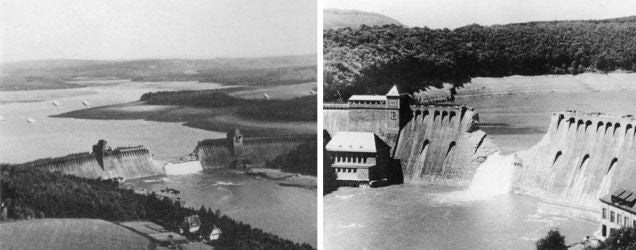
On the night of May 16, nineteen specially modified Avro Lancaster bombers set out for Germany. Almost immediately, aircraft began having trouble. Some returned to base, while others were lost to enemy flak or crashed into antennas or power pylons. But the remaining planes forged ahead, and the Möhne Dam was the first to be hit and breached, followed by the Eder Dam. The Sorpe Dam, which was an earthen dam with a concrete core, was not breached, nor was the Ennepe Dam. On the return flight, two more Lancasters were lost, bringing the total to 8 aircraft shot down and 53 airmen killed. The results of the raid were certainly catastrophic but, despite the destruction, the Germans recovered quickly, and the hoped-for interruption of manufacturing and transportation did not materialize. In all, 1,600 were killed, but 1,000 of those were Russian prisoners and forced laborers. And though factories were damaged and power was interrupted, water and electricity supplies returned to normal in just one month’s time. However, the raids did have the strategic result of keeping the Luftwaffe occupied protecting other infrastructure targets, and the development of extremely large bombs continued, resulting in the Tallboy and Grand Slam “ earthquake bombs ” which were used with great effect against hardened German targets later in the war. (Illustration author unknown; dam photos via the Deutsches Bundesarchiv)
!!! UNKNOWN CONTENT TYPE !!!
!!! UNKNOWN CONTENT TYPE !!!
!!! UNKNOWN CONTENT TYPE !!!
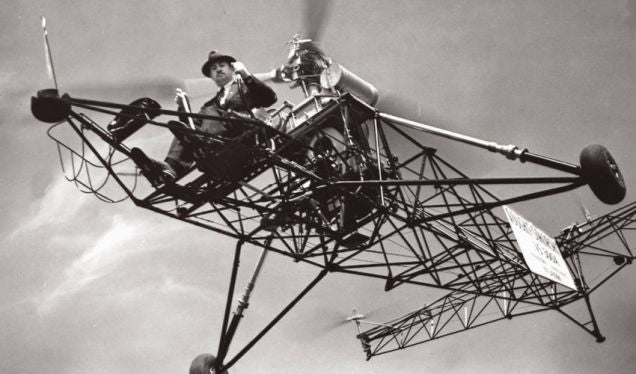
May 13, 1940 – The Sikorsky VS-300 makes its first untethered flight.
Igor Sikorsky’s
quest for a viable rotorcraft lead to the development of the VS-300 in 1938. However, Sikorsky had particular difficulty figuring out a system for
cyclic
control. So, as a safety measure, he undertook a series of tethered flights to work out the details of the control system. Once solved, Sikorsky untethered the helicopter and achieved completely controlled free flight. The VS-300 became the first single lifting-rotor helicopter in the US, and the first successful helicopter to use a single vertical tail rotor. The VS-300 was also the first to employ a single engine to power both rotors. The control system devised by Sikorsky is still in use today.
(Photo author unknown)
!!! UNKNOWN CONTENT TYPE !!!
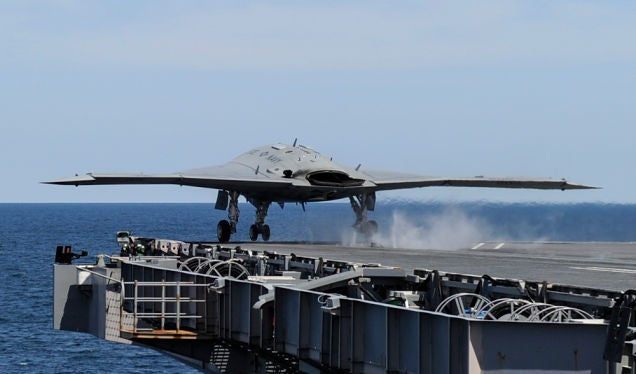
May 14, 2013 – The Northrop Grumman X-47B becomes the world’s first unmanned aircraft to launch from an aircraft carrier.
In 2000, the US Navy committed to the development of an Unmanned Combat Air System (UCAS) and awarded contracts for demonstrator aircraft to Boeing and Northrop Grumman. Following its launch from the
USS George H.W. Bush
(CVN 77), the X-47B performed the first autonomous touch-and-go landings three days later and the first arrested carrier landing on July 10. The X-47B also demonstrated autonomous aerial refueling in April of 2015. The X-47 program has finished, and the Navy plans to open the competition for a deployable fleet of
Unmanned Carrier-Launched Airborne Surveillance and Strike
(UCLASS) aircraft in 2017, with regular operations beginning in 2020.
(US Navy photo)
!!! UNKNOWN CONTENT TYPE !!!
!!! UNKNOWN CONTENT TYPE !!!
May 14, 2005 – Didier Delsalle lands a helicopter on the summit of Mt. Everest. Delsalle began his flying career in 1979 as a fighter pilot before transitioning to helicopters and working as a search and rescue pilot. He later became the chief test pilot for Eurocopter (now Airbus Helicopters ). Flying a Eurocopter AS350 Écureuil ( Squirrel ), Delsalle touched down on the summit of Mt. Everest at an elevation of 29,029 feet, marking not only the highest elevation ever landed on but the highest elevation possible on Earth. Delsalle repeated the feat the following day under more adverse conditions. The AS350 was only modified by the removal of seats to lessen the aircraft’s weight, and Delsalle reported that he discovered such strong updrafts that he barely needed any of the helicopter’s power to reach the summit.
!!! UNKNOWN CONTENT TYPE !!!
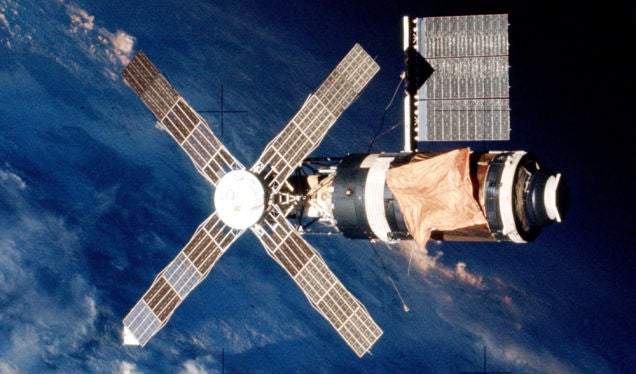
May 14, 1973 – The launch of Skylab, the United States’ first orbiting space station. Skylab was launched into Earth orbit atop a modified Saturn V rocket and orbited the planet for six years. During that time, NASA sent three manned missions to the station, where the crews performed scientific experiments and made observations of the Earth and Sun. NASA originally intended to use the Space Shuttle , under development at the time, to boost Skylab to a higher orbit, refurbish it, and expand it to accommodate 6 to 8 astronauts, thus extending Skylab’s mission for an additional five years. However, delays in the Shuttle program made that impossible, and Skylab re-entered the atmosphere and disintegrated over the Pacific Ocean and western Australia in 1979. (NASA photo)
!!! UNKNOWN CONTENT TYPE !!!
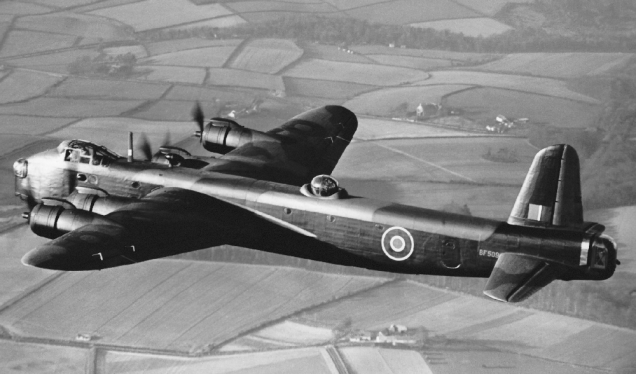
May 14, 1939 – The first flight of the Short Stirling,
a heavy bomber developed for the RAF and the first four-engine heavy bomber of WWII. The Stirling entered service in 1941 and was capable of carrying an enormous 14,000-pound bomb load. It was also larger than both the
Handley Page Halifax
and the
Avro Lancaster
, the bombers that were designed to replace it. However, both of those aircraft began life as twin-engine aircraft, while the Stirling was conceived with four engines from the beginning. The Stirling’s service life was relatively short, and it was withdrawn from frontline duties by 1943. Following its withdrawal, it was used primarily for mine laying, and also played a significant role in the D-Day invasion as a glider tug.
(Photo via Royal Air Force)
!!! UNKNOWN CONTENT TYPE !!!
!!! UNKNOWN CONTENT TYPE !!!
May 14, 1928 – Mickey Mouse makes his debut in the short animated film Plane Crazy . Though the animated short Steamboat Willie , which debuted in November of the same year, marked Mickey Mouse’s debut in talking pictures, Plane Crazy debuted six months earlier and marked the true debut of Walt Disney’s most famous character. Debuting as a silent picture in the nascent era of the talkie, Plane Crazy failed to find a distributor, and was re-released on March 17, 1929 with a sound track, making it the fourth Mickey Mouse film after Steamboat Willie , The Gallopin’ Gaucho , and The Barn Dance .
!!! UNKNOWN CONTENT TYPE !!!
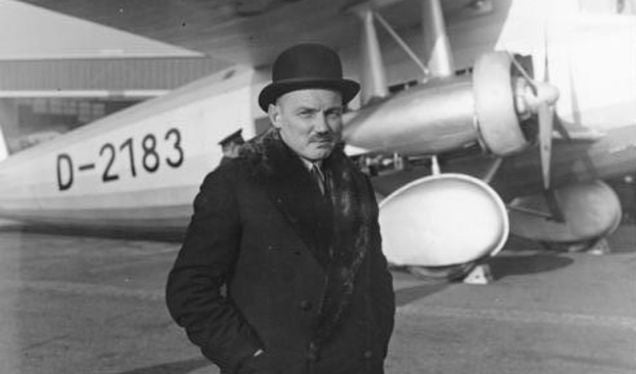
May 14, 1894 – The birth of Claude Honoré Desiré Dornier.
Originally named Claudius, Dornier was born in Kempten im Allgäu in Bavaria, the son of a French wine importer (hence his French name). After graduating from the
Technical University of Munich
in 1907, Dornier went to work for Luftshiffbau Zeppelin
in 1910, and soon caught the eye of Count
Ferdinand von Zeppelin
, who appointed Dornier as his personal scientific advisor. Dornier’s work in metallurgy led to the development of the
Zeppelin-Lindau D.I
, the first stressed-skin, all-metal aircraft to enter production. Dornier founded his own company,
Dornier Flugzeugwerke
, in 1914, where he produced some of the iconic aircraft flown by the Luftwaffe in WWII, such as the
Do 17
“Flying Pencil” and the
Do 335 Pfeil
(
Arrow
). Dornier died in 1969.
(Photo via
Deutsches Bundesarchiv
)
!!! UNKNOWN CONTENT TYPE !!!
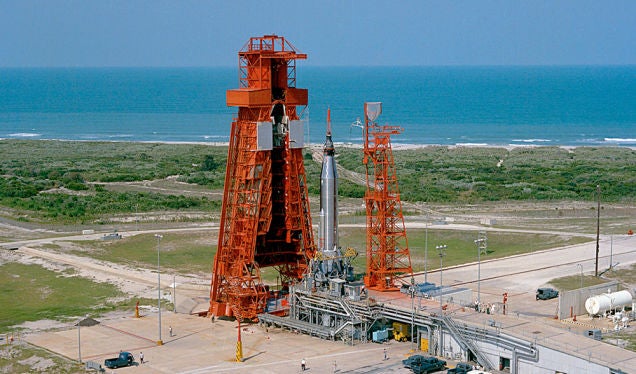
May 15, 1963 – The launch of Mercury-Atlas 9,
the 6th manned and final flight of
Project Mercury
. It was also the last time NASA launched a spacecraft with only a single astronaut on board. Astronaut
Gordon Cooper
completed 22 orbits of the Earth in the capsule
Faith 7
before splashing down into the Pacific Ocean on May 16. The flight marked the first time an American astronaut had spent an entire day in space (officially, the flight lasted 1 day, 10 hours, 19 minutes, 49 seconds), and Cooper was also the first American to sleep in space. Following Project Mercury, NASA moved on to the two-man
Project Gemini
, where Cooper flew as Command Pilot of
Gemini 5
, making him the first astronaut to make a second orbital flight.
(NASA photo)
!!! UNKNOWN CONTENT TYPE !!!

May 15, 1941 – The first flight of the Gloster E.28/39, the first British jet-powered aircraft. British engineer Frank Whittle is credited with the invention of the turbojet engine (though credit for the first operational jet engine goes to Germany’s Dr. Hans von Ohain ), and in September of 1939, Gloster received a specification from the Air Ministry for an airplane that could test one of Whittle’s new engines in flight. The result was the Gloster E.28/39 (the unwieldy name comes from the aircraft’s conforming to the 28th specification in the year 1939), and two prototypes were ordered. Testing proved successful, and paved the way for the Gloster Meteor , the first British jet fighter and the first operational Allied jet aircraft of WWII. (Imperial War Museum photo)
!!! UNKNOWN CONTENT TYPE !!!
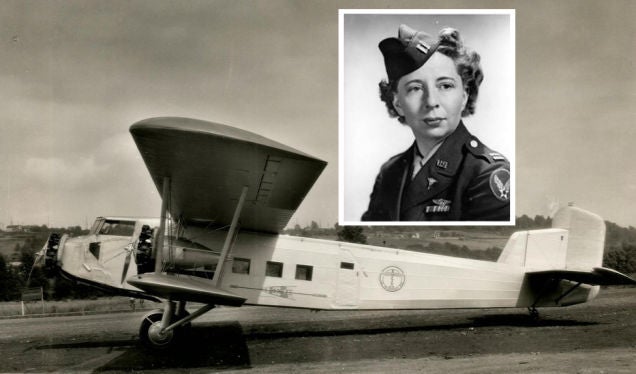
May 15, 1930 – Ellen Church becomes the world’s first stewardess.
Born in Cresco, Iowa in 1904, Church was a pilot and registered nurse whose goal was to become a pilot. When Boeing Air Transport (eventually
United Airlines
) refused to hire her in that capacity, she put her nursing skills to work when she was hired as a stewardess in order to help allay the fears of the flying public. Church took her first flight as a stewardess on May 15, 1930 on a
Boeing 80A
flying from Oakland to San Francisco. Though an automobile accident ended her flying career after just 18 months, Church served in the
Army Nurse Corps
in WWII as a flight nurse, where she earned the
Air Medal
. Church died in a horse riding accident in 1965.
(Boeing 80 photo via
Boeing
, Church photo via
Women in Aerospace History
)
!!! UNKNOWN CONTENT TYPE !!!
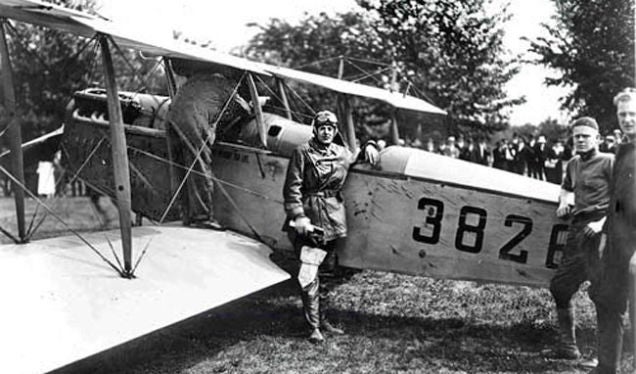
May 15, 1918 – The first regular US airmail service commences.
With the advent of (relatively) reliable air transport following WWI, flying mail in the United States was begun by pilots of the US Army Air Service. Under the command of Major
Reuben Fleet
, six
Curtiss HN-4HM
“Jenny” biplanes began operating on the route between Washington, DC and New York City, with a stop in Philadelphia, PA. However, the service got off to an inauspicious start when Army pilot 2nd Lt. George Boyle got lost and made a hard landing when he stopped to ask for directions. As a result, the first delivery had to be completed by truck. After four months, the Air Mail service was taken over by the US Post Office Department employing civilian pilots.
(US Army photo)
!!! UNKNOWN CONTENT TYPE !!!
!!! UNKNOWN CONTENT TYPE !!!
!!! UNKNOWN CONTENT TYPE !!!
!!! UNKNOWN CONTENT TYPE !!!
!!! UNKNOWN CONTENT TYPE !!!
!!! UNKNOWN CONTENT TYPE !!!
!!! UNKNOWN CONTENT TYPE !!!
If you enjoy these Aviation History posts, please let me know in the comments. And if you missed any of the past articles, you can find them all at Planelopnik History . You can also find more stories about aviation and aviators at Wingspan and Planes You’ve (Probably) Never Heard Of .
!!! UNKNOWN CONTENT TYPE !!!
 "RallyWrench" (rndlitebmw)
"RallyWrench" (rndlitebmw)
05/16/2017 at 13:02, STARS: 0
I so love the Canberra, ever since learning about it on Wings as a kid. Is that Everest elevation right?
 "ttyymmnn" (ttyymmnn)
"ttyymmnn" (ttyymmnn)
05/16/2017 at 13:04, STARS: 0
That’s what the Internet tells me. I haven’t climbed it myself.
 "RallyWrench" (rndlitebmw)
"RallyWrench" (rndlitebmw)
05/16/2017 at 13:17, STARS: 0
Huh, I thought it was 28 or 29,000 something.
 "You can tell a Finn but you can't tell him much" (youcantellafinn)
"You can tell a Finn but you can't tell him much" (youcantellafinn)
05/16/2017 at 13:20, STARS: 1
Looks like a typo. It should be 29,029 feet and you have 20,029.
 "ttyymmnn" (ttyymmnn)
"ttyymmnn" (ttyymmnn)
05/16/2017 at 13:29, STARS: 0
You’re right, it is a typo. Thanks for pointing that out. The 9 and 0 are very close to each other on the keyboard....

05/16/2017 at 13:57, STARS: 1
Interestingly for aircraft ostensibly operated by NASA , the three WB-57s (NASA 926 AKA Rivet Slice 2, NASA 927 AKA Rivet Chip 8, and NASA 928 AKA Rivet Chip 11 spent an awfully long time over Afghanistan between 2005 and 2012.
I highly recommend The Dam Busters (specifically the British cut, if you can). It’s based on a book by the same name written by Paul Brickhill, as well as Enemy Coast Ahead written by Guy Gibson. The RAF provided Lancaster and Lincoln bombers for filming, and they filmed in the same valley used by the 617.
Another interesting, if not slightly infuriating “What if?”: if the DOD hadn’t pushed so many changes and delays on the STS program, where might we be had the Shuttle been able to boost and expand Skylab?
 "ttyymmnn" (ttyymmnn)
"ttyymmnn" (ttyymmnn)
05/16/2017 at 14:28, STARS: 1
Good stuff. Thanks. As for Skylab, I wonder if it was really pie-in-the-sky dreaming that it would last very long. It would likely have been a run down Winnebago, like Mir, by the time the ISS came along. Still, we wouldn’t have been beholden to the Russians to practice for long-duration space flight.

05/16/2017 at 15:24, STARS: 1
Oh, I have no doubts we’d have ditched Skylab for Freedom or Alpha by ‘95 at best, but we’d have had that much more experience building in space by then.
 "facw" (facw)
"facw" (facw)
05/16/2017 at 21:09, STARS: 0

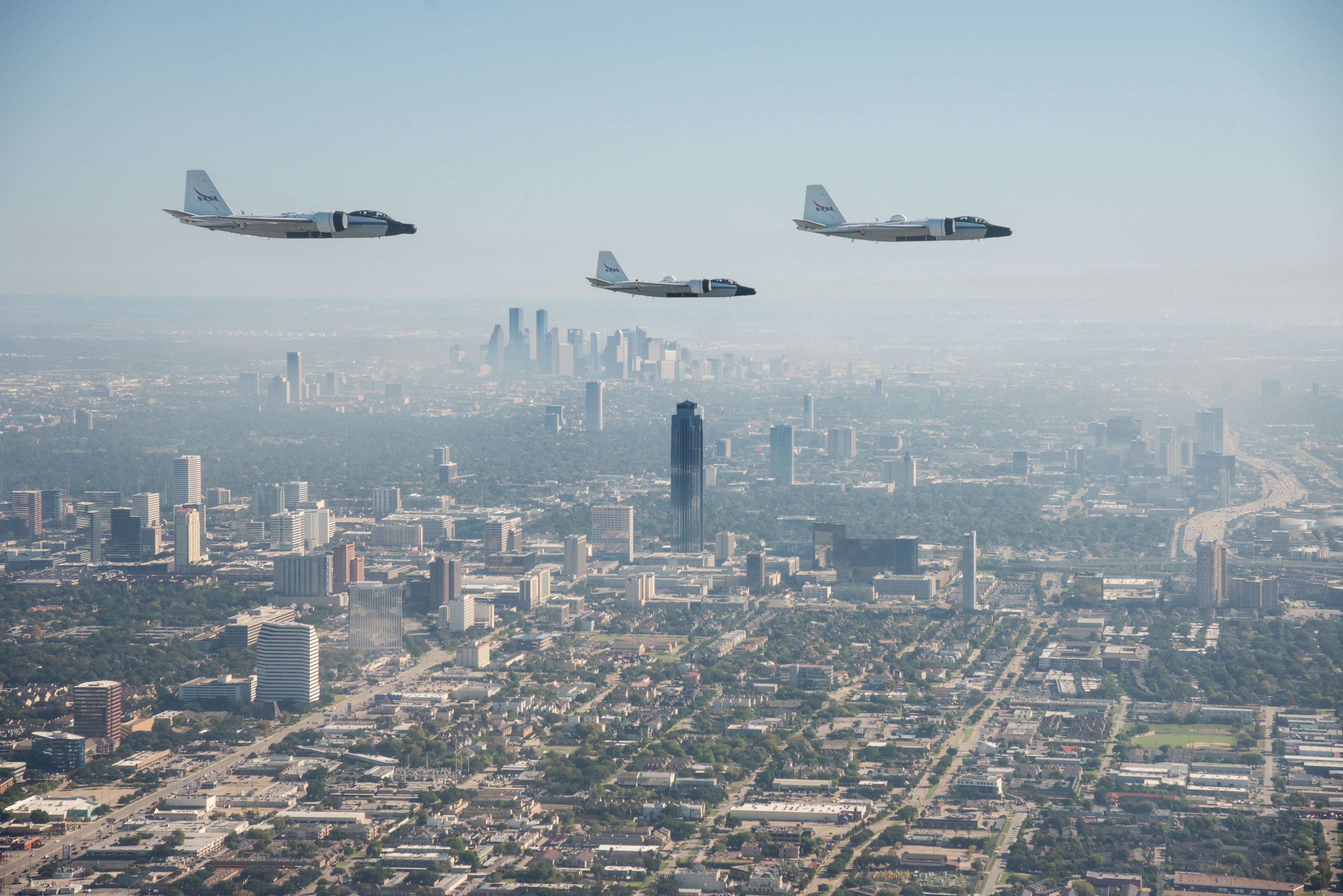
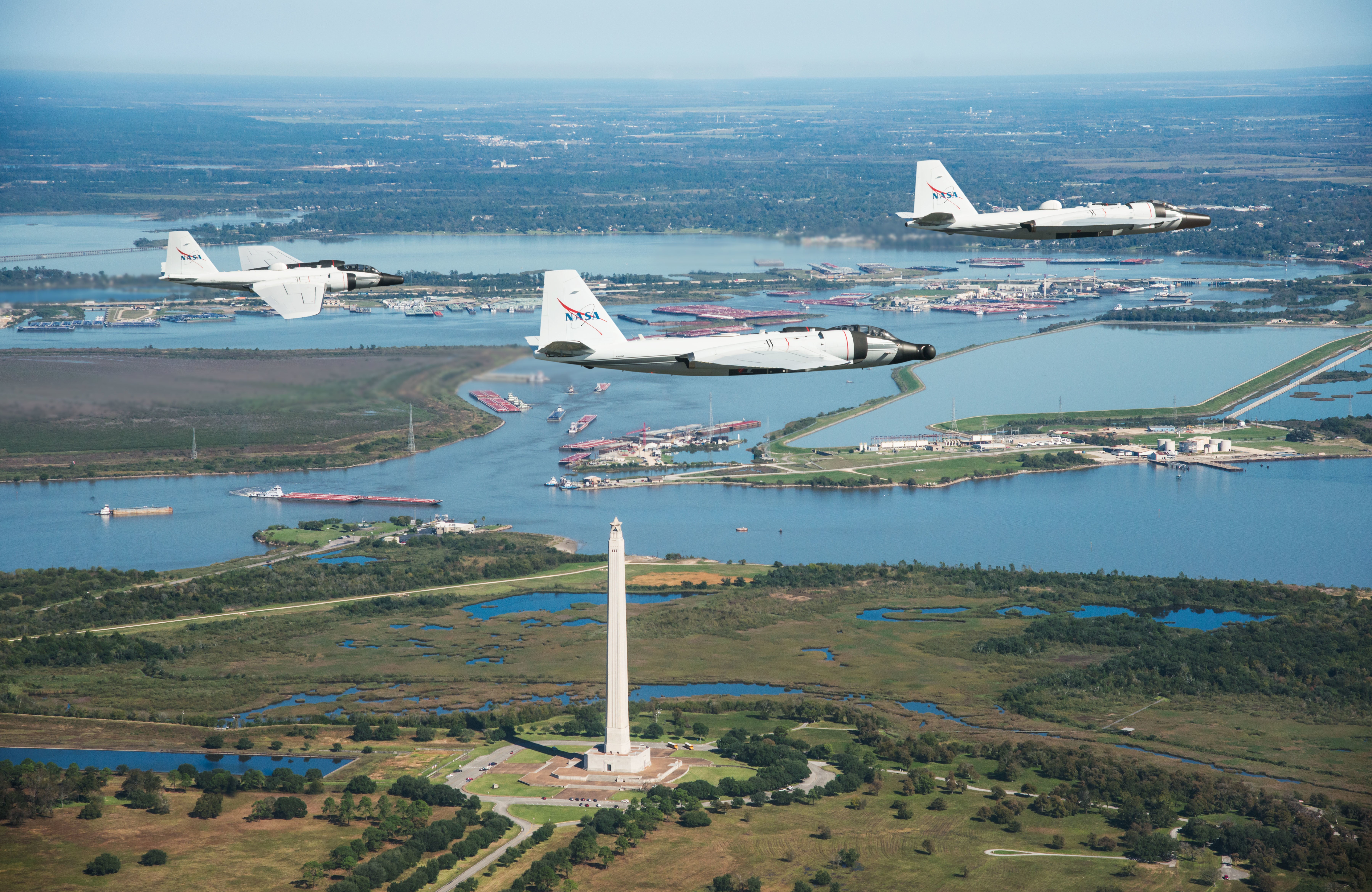
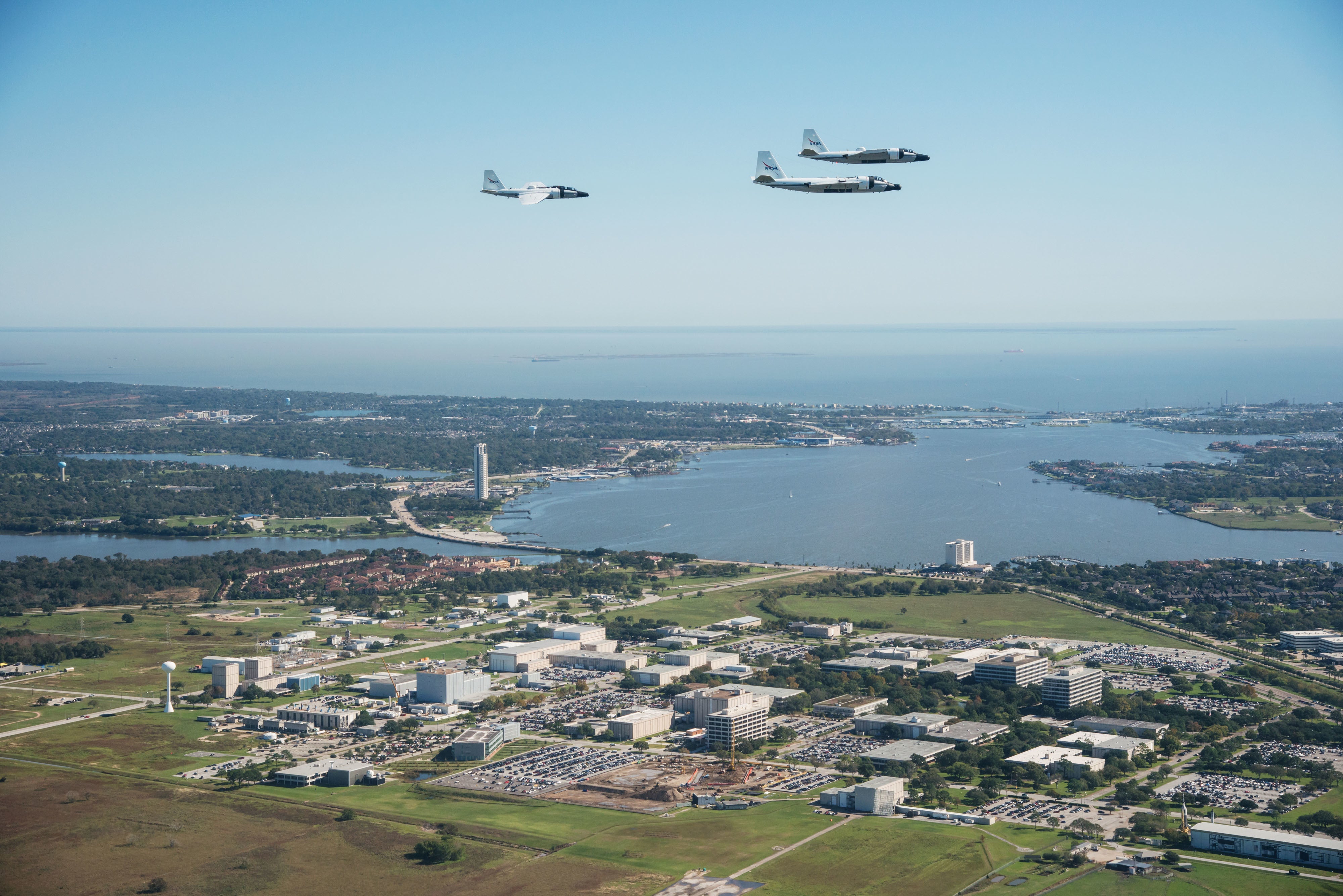
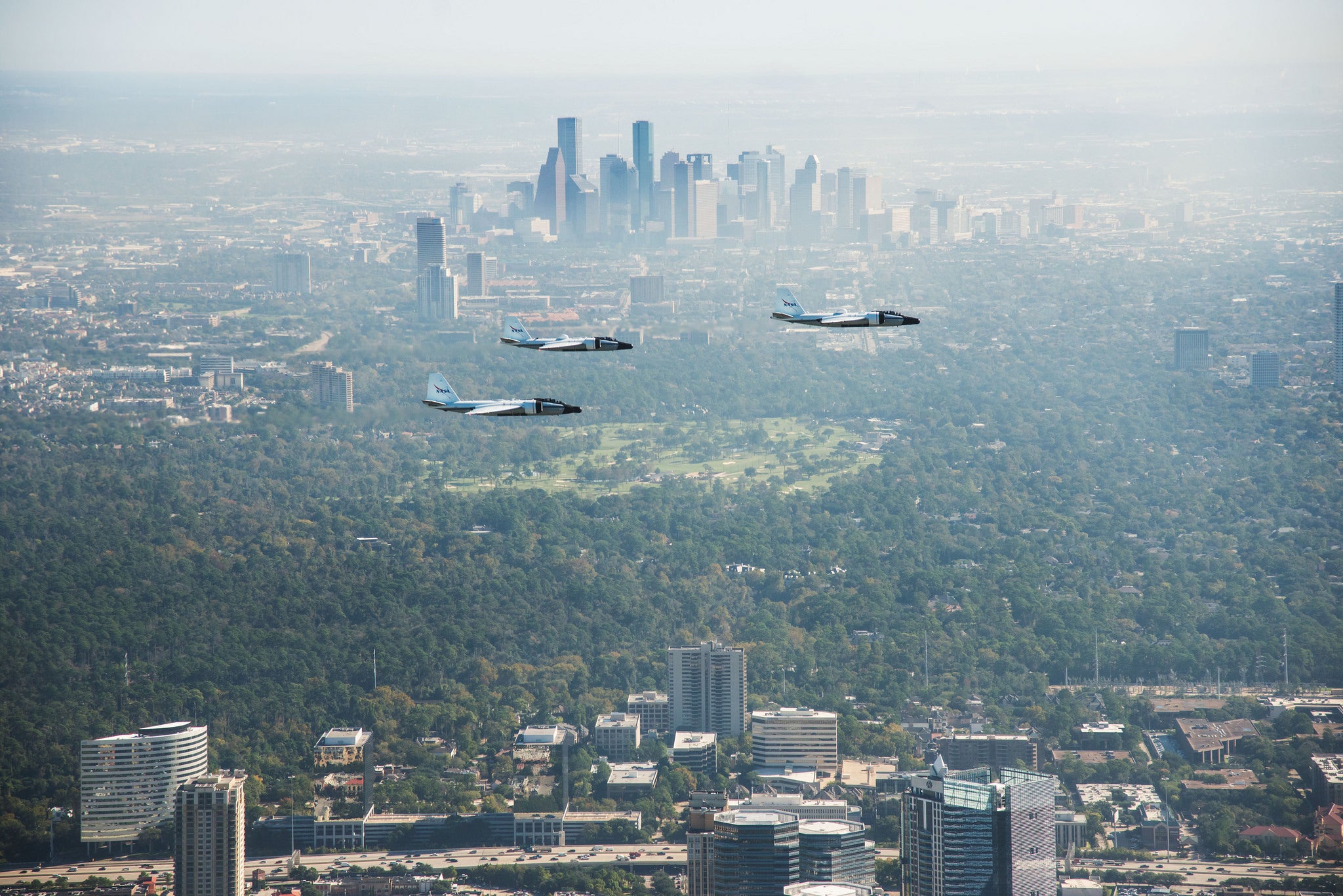
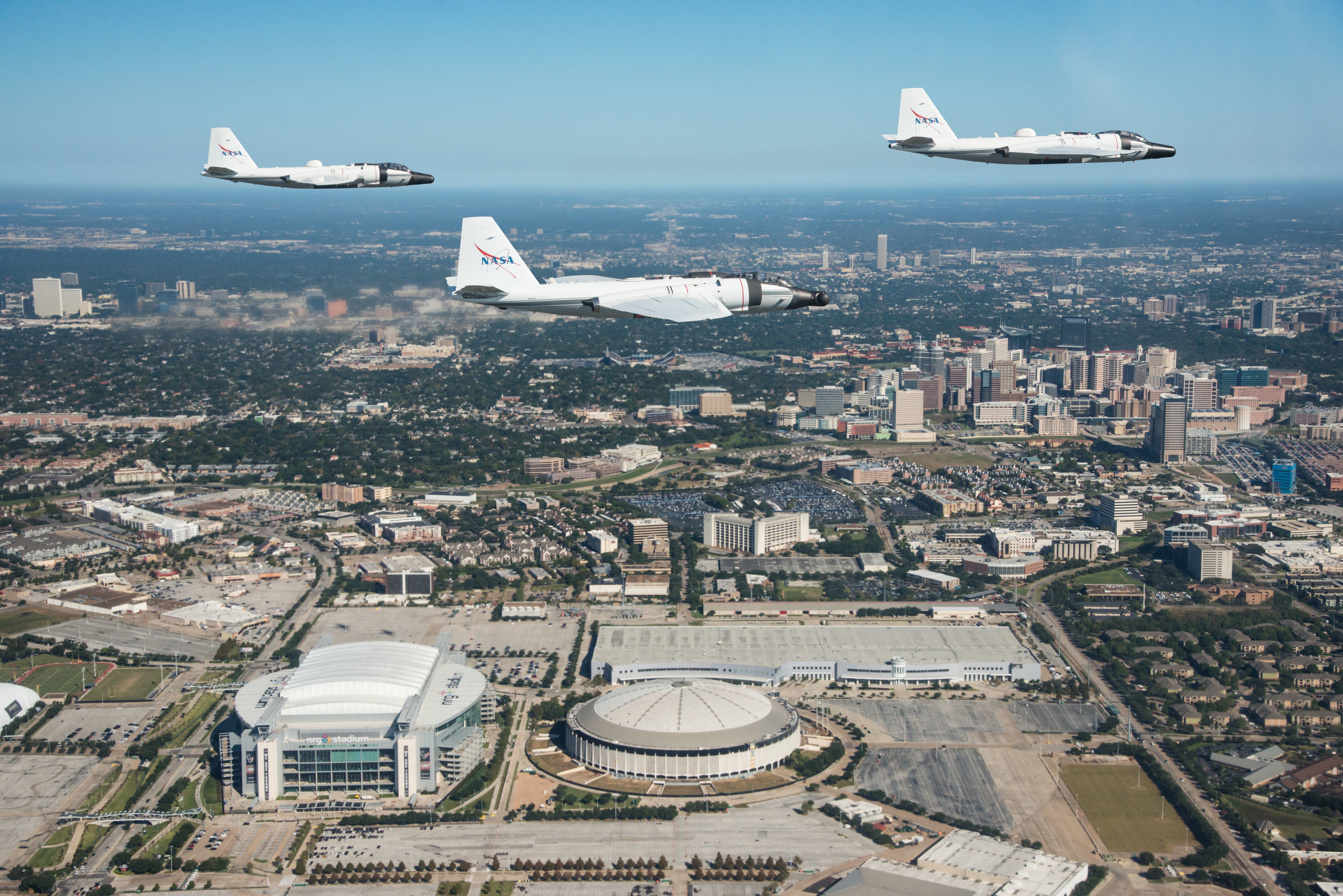
My apartment is just out of view in that last one.
In any event, as Skyfire77 says, these planes have definitely been doing more than taking weather readings.
AMARG has 11 of these guys still in their inventory, and while obviously some are just basically museum pieces, I think it still shows the type is considered important to someone (as does the fact they actually regenerated one that had sat since the 1970s).
 "ttyymmnn" (ttyymmnn)
"ttyymmnn" (ttyymmnn)
05/17/2017 at 11:15, STARS: 0
One of the reasons I miss living in Houston. One time I was driving down 45 and saw the Shuttle/SCA in flight. Not something you see every day. I also miss Wings Over Houston. That’s always a great show.
 "facw" (facw)
"facw" (facw)
05/17/2017 at 12:14, STARS: 0
I did actually have an opportunity to see the SCA last weekend:
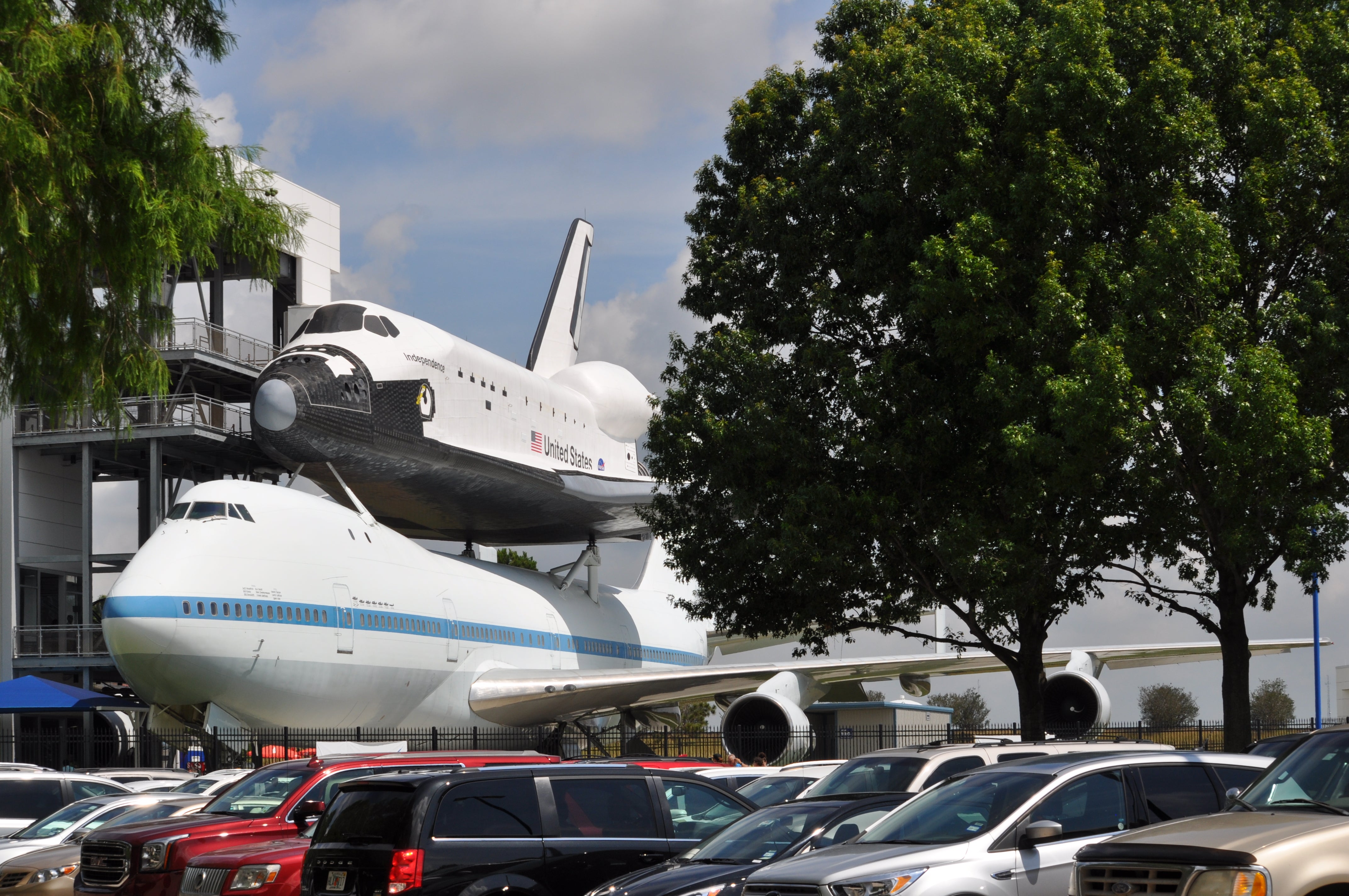
I’ve only ever seen one in flight once though, when they brought Enterprise to Dulles in the ‘80s.
 "ttyymmnn" (ttyymmnn)
"ttyymmnn" (ttyymmnn)
05/17/2017 at 12:17, STARS: 0
When NASA was distributing the Shuttles after they shut down the program, one of them flew right over UT-Austin. I had no idea. I would have kept my kids out of school to go down and see it. That was a major disappointment.

 "facw" (facw)
"facw" (facw)
05/17/2017 at 12:23, STARS: 1
I was actually in NYC when they brought in Enterprise, but sadly didn’t get to see its flyby. I did nearly crash my bike into a pole gawking at it on the Intrepid back before they got it under their stupid tennis bubble (since replaced by a stupid shed since it turns out tennis bubbles are not at all hurricane proof).
 "ttyymmnn" (ttyymmnn)
"ttyymmnn" (ttyymmnn)
05/17/2017 at 12:25, STARS: 0
Tennis bubble not hurricane proof? Who’d-a-thunk?
 "facw" (facw)
"facw" (facw)
05/17/2017 at 12:30, STARS: 0
I still have no idea how they got a shuttle. I can buy sending one to NYC, but to do so when there was basically no plan to protect it (as evidenced by the fact it has been broken twice), makes no sense, especially when Seattle, Houston, Dayton, and Chicago all had near term plans for permanent housing, as opposed to Intrepid’s “maybe we’ll build a separate space building across the street someday” approach.
 "ttyymmnn" (ttyymmnn)
"ttyymmnn" (ttyymmnn)
05/17/2017 at 12:37, STARS: 0
That whole process was total political BS.
 "facw" (facw)
"facw" (facw)
05/17/2017 at 12:39, STARS: 1
Maybe, though you’d think Obama would have had Chicago’s back. Or at least Dayton if that’s “close enough” and you wanted to throw the Air Force a bone.